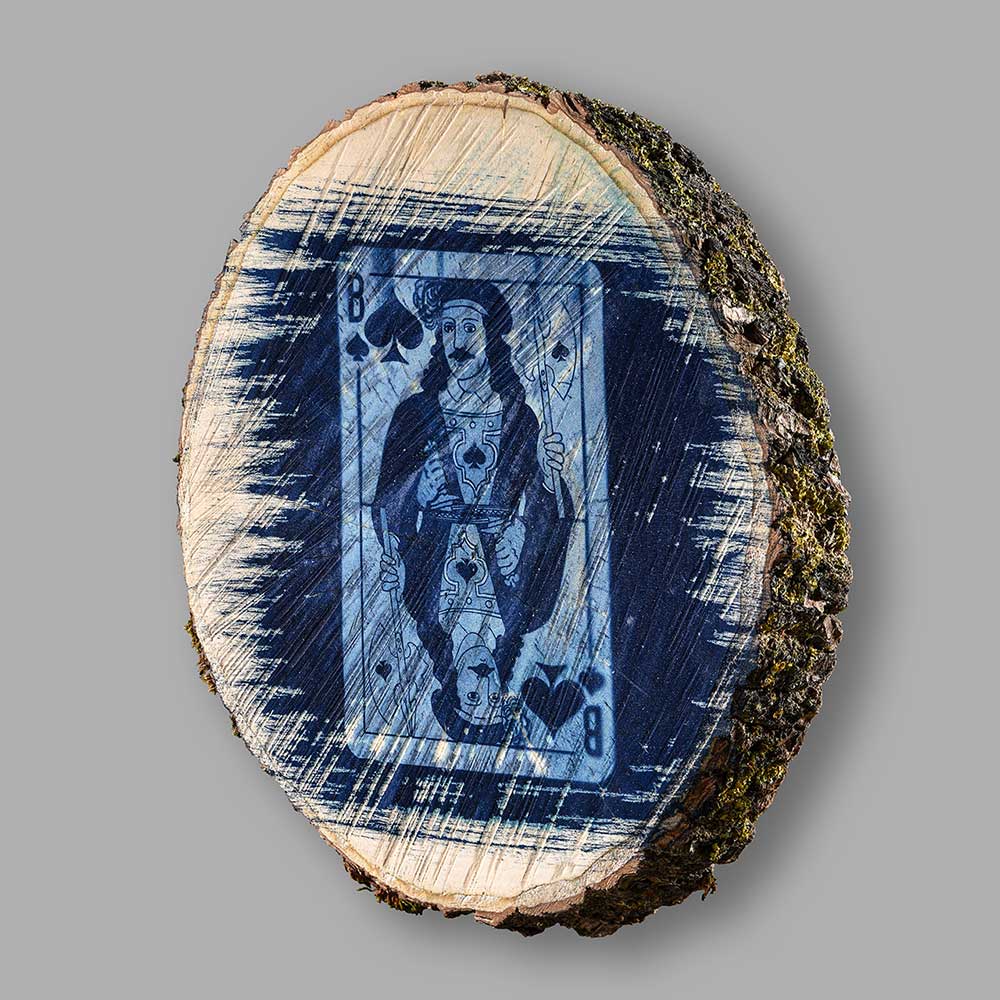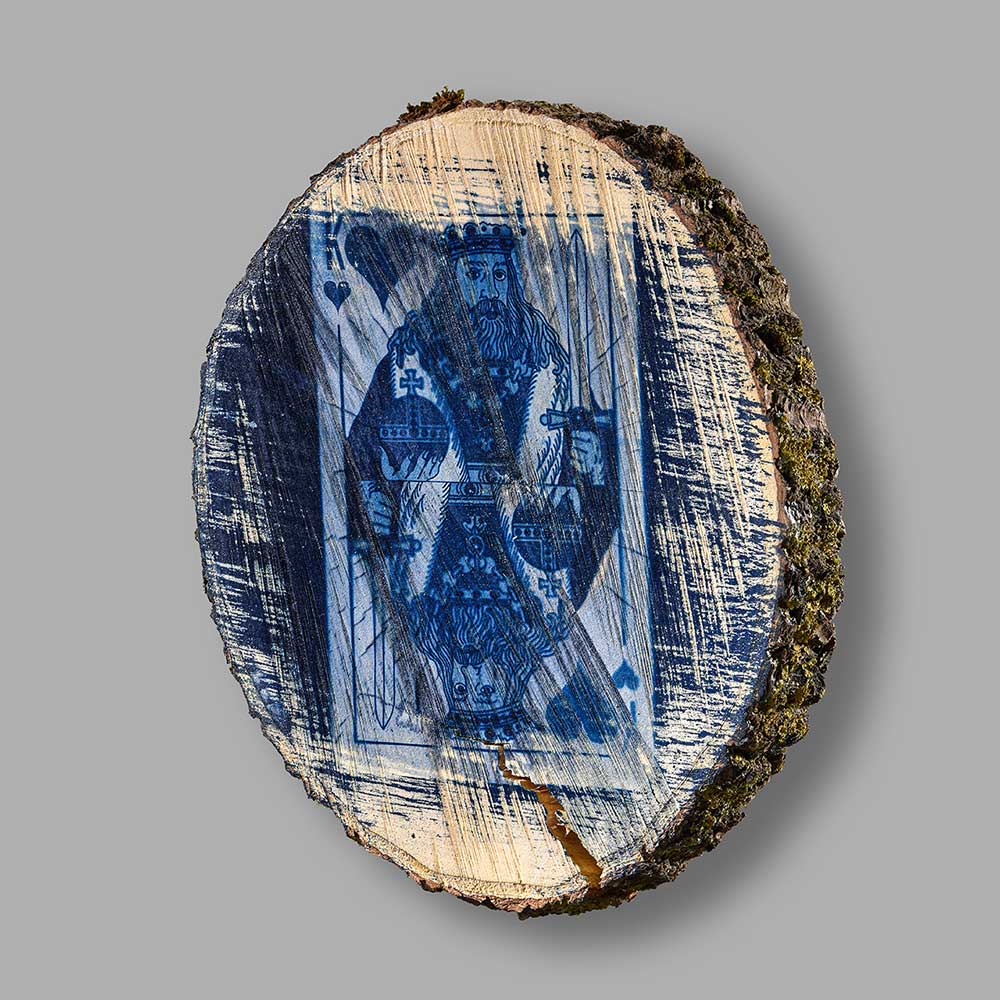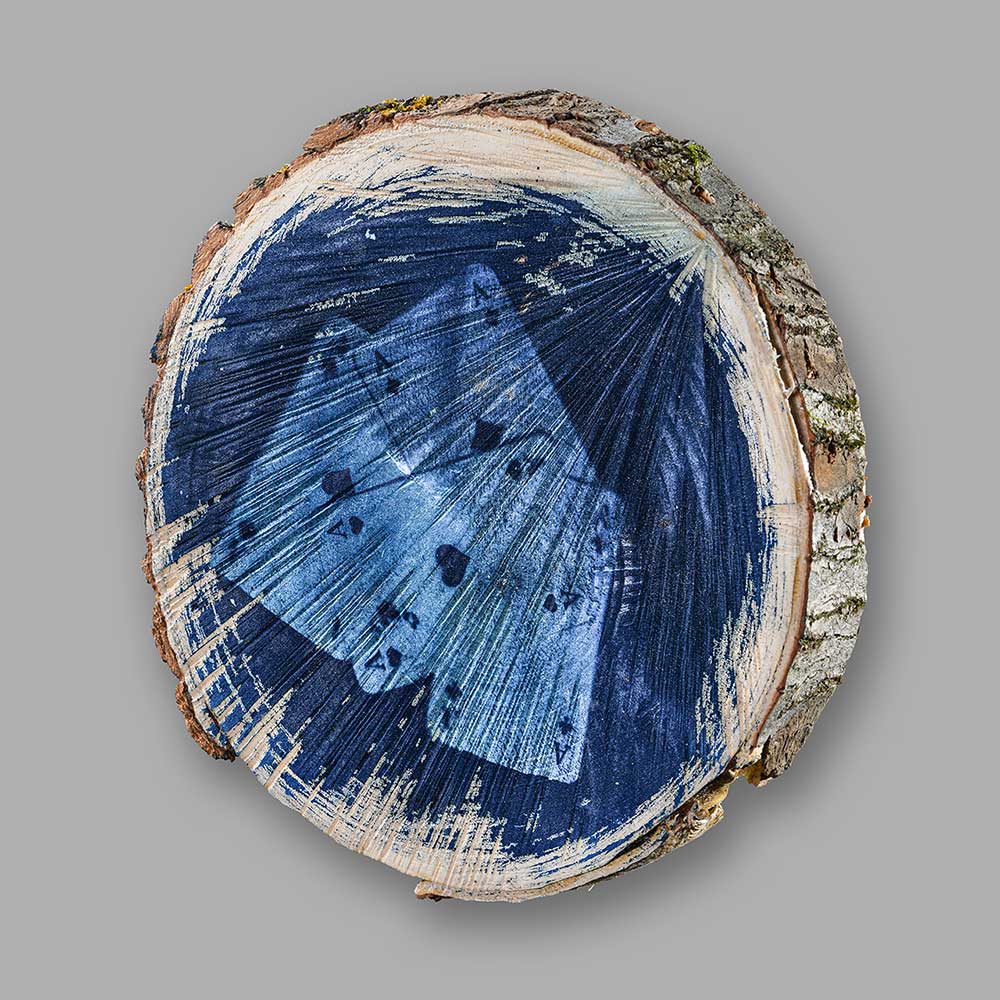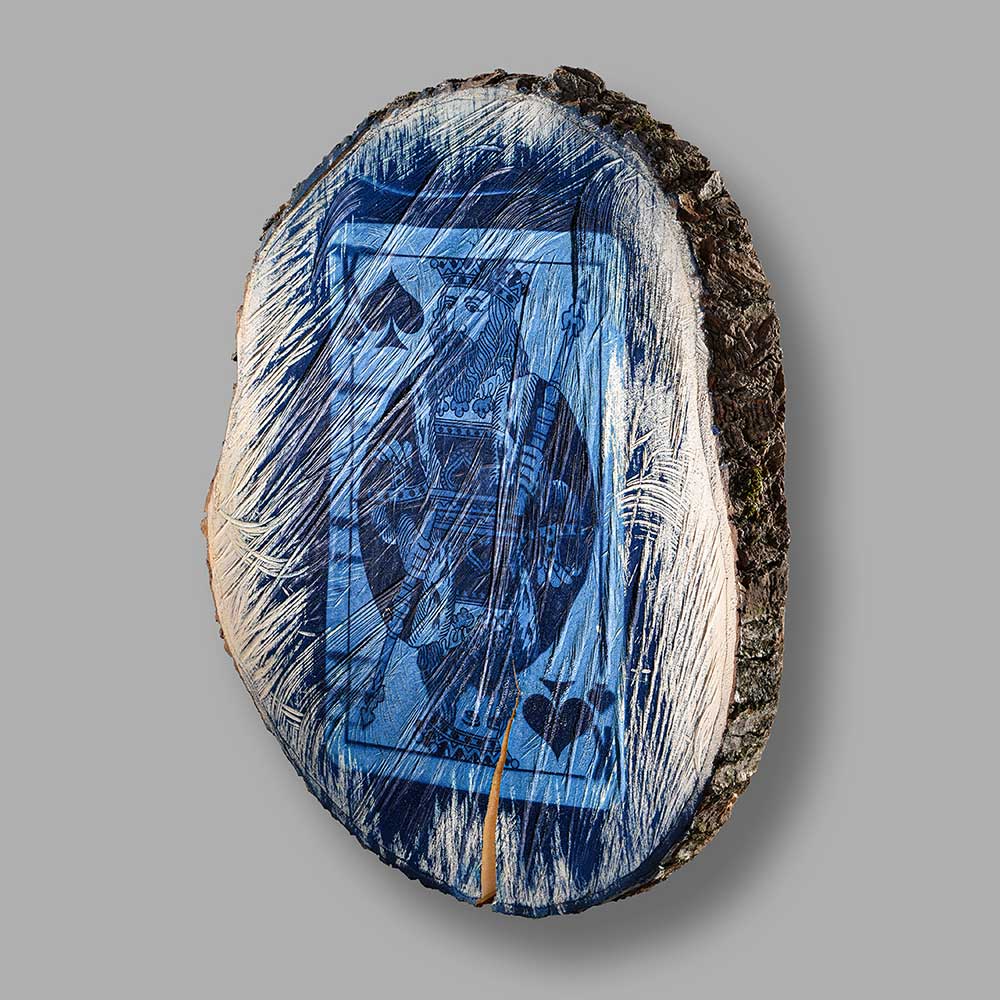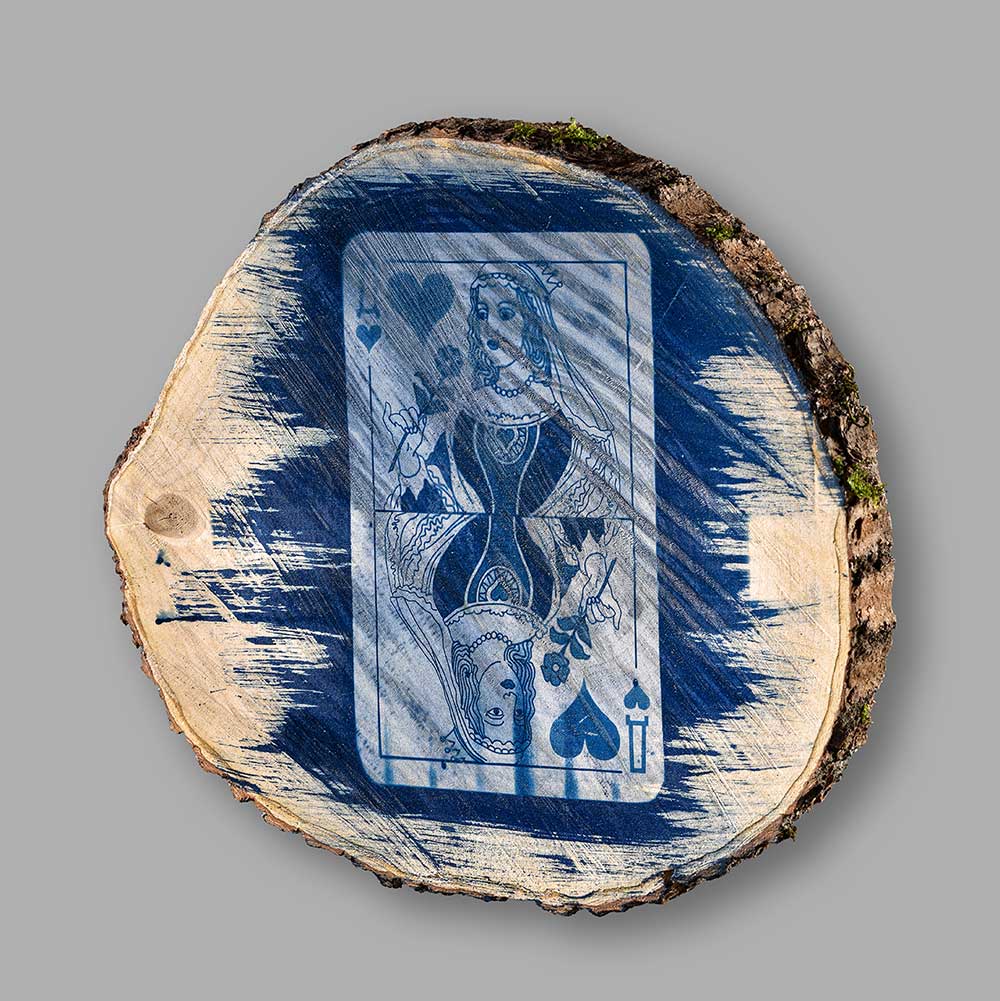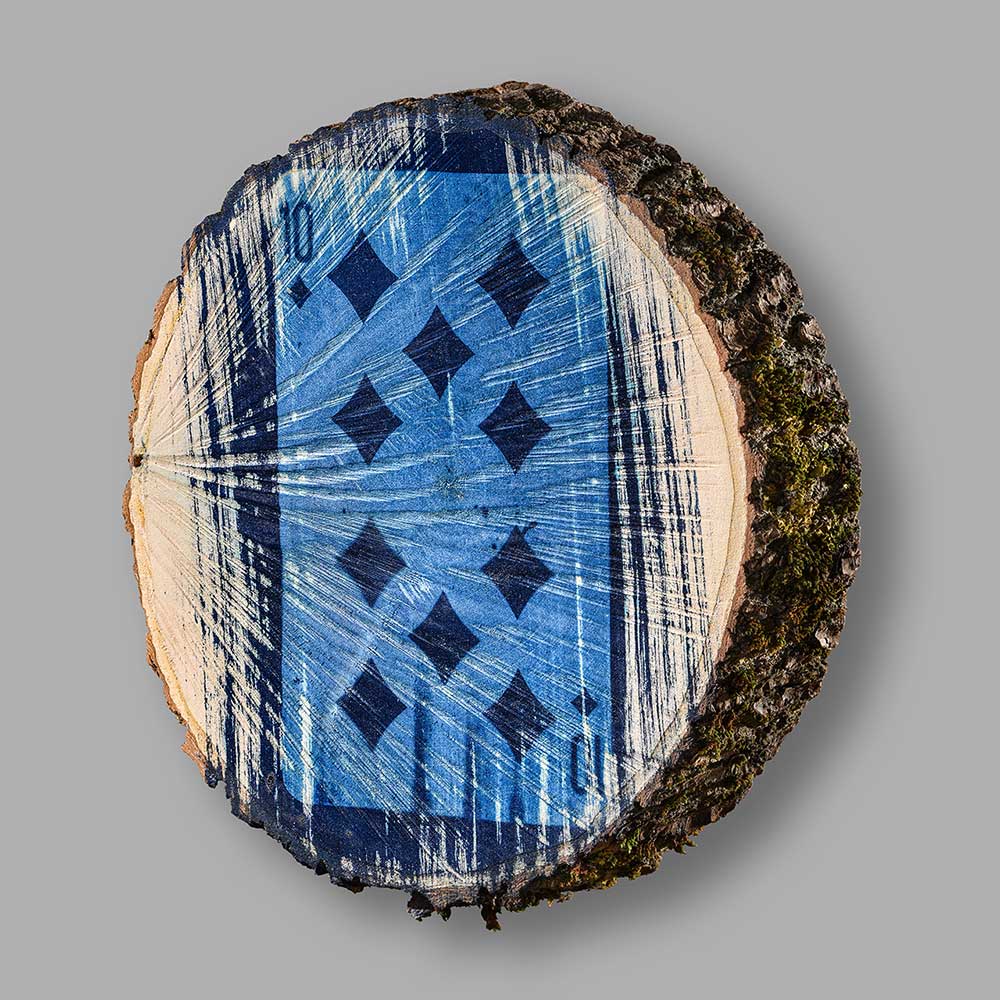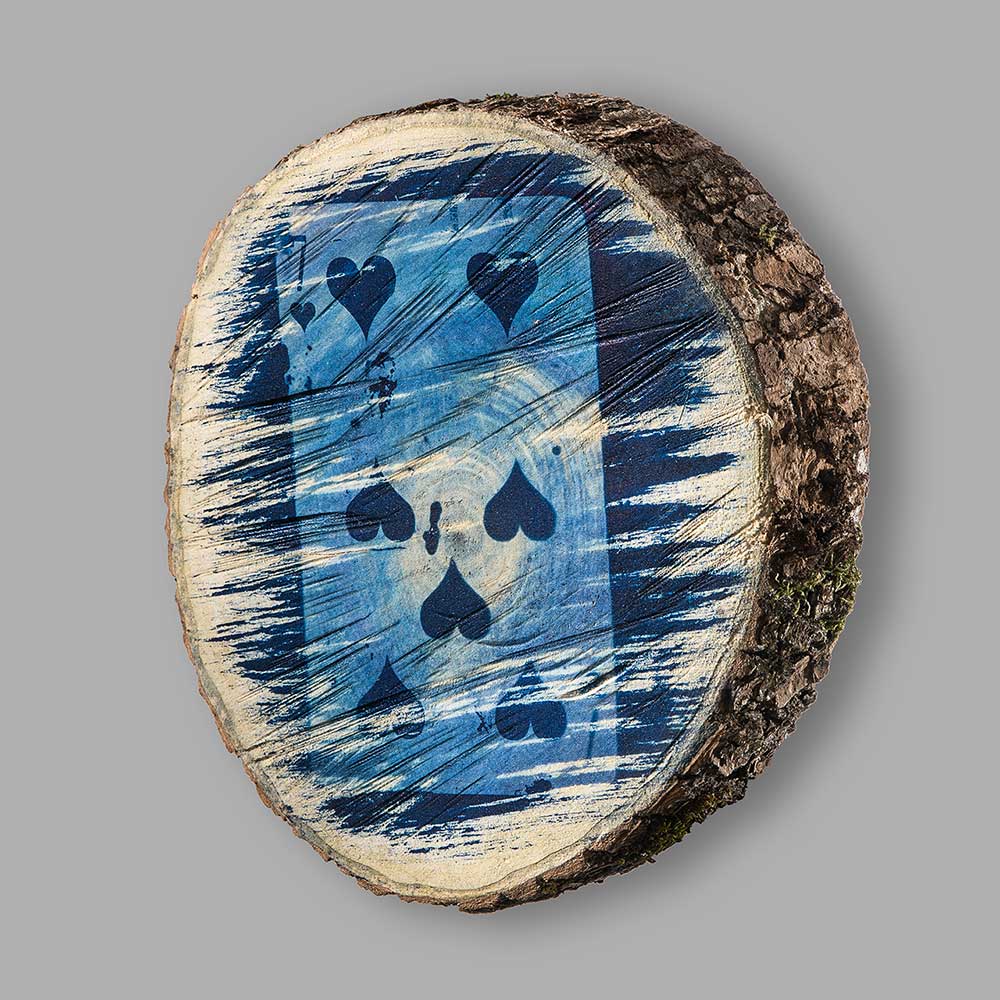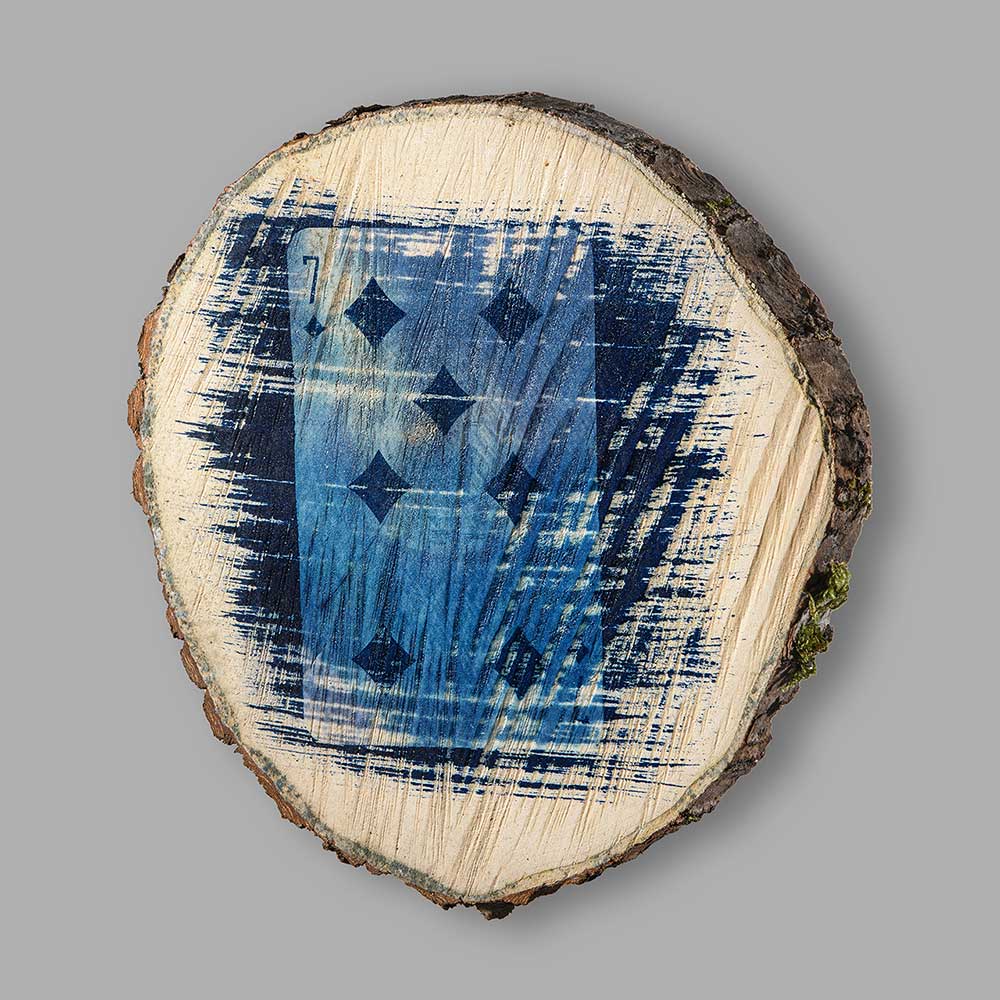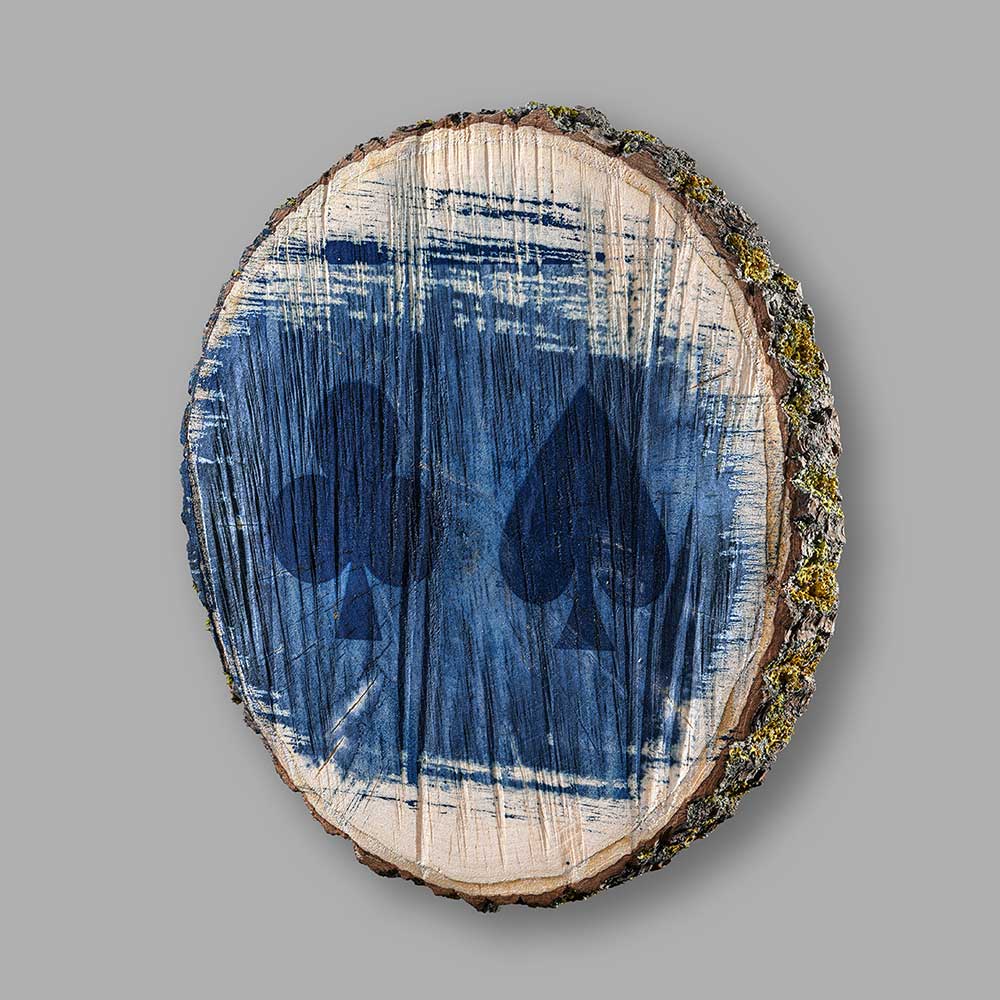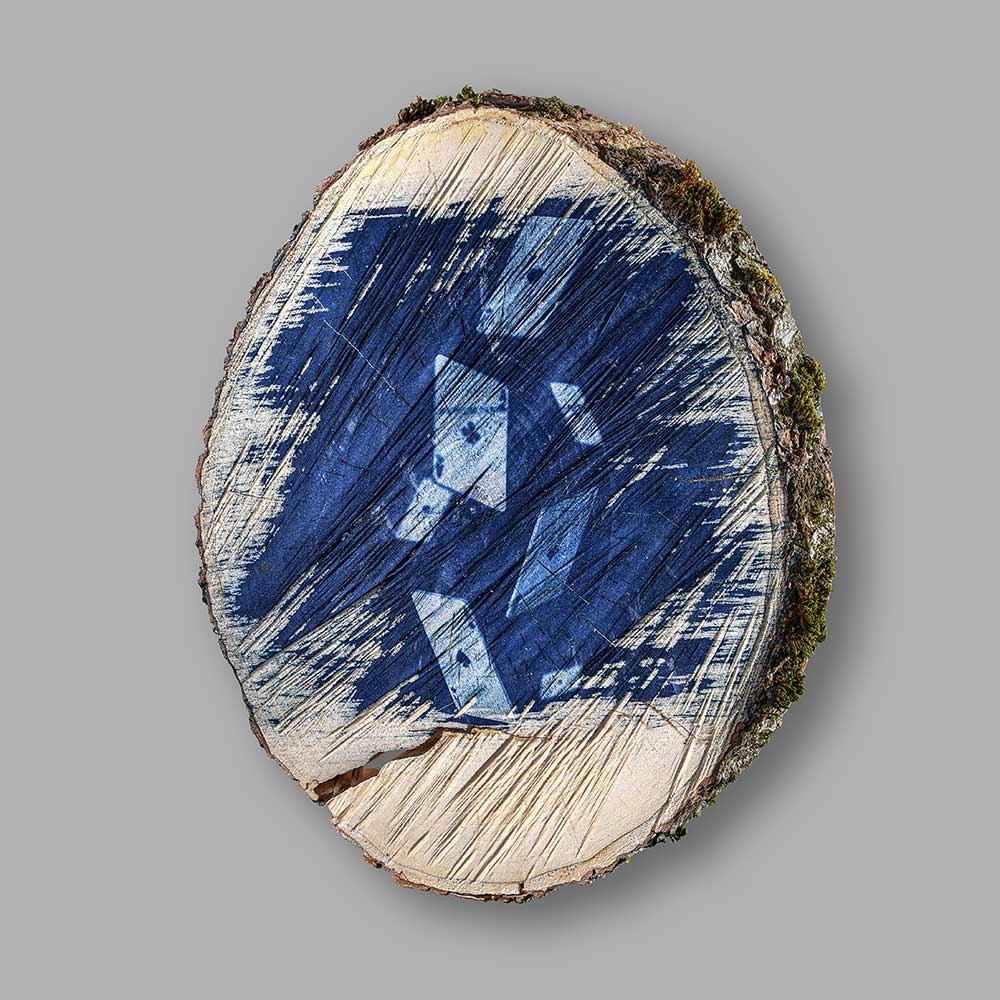During my career of art critic and media artist I have met a great variety of contemporary art creators. Some appear on my horizon only fragmentarily and do not stay in my memory for long, others provoke intense reflection of their work.
I will not be mistaken to say that the photographer from Panevėžys Žilvinas Kropas belongs to the latter group. He always surprises me. I follow his artistic work for several years now and have expressed my ideas about it in several critical texts.
I am among the lucky ones who are the first to see Žilvinas’ photographs. Every year the energetic author creates at least several unbelievably expressive artistic collections. For the realization of his ideas, he often chooses to work in old experimental photography techniques. That is why, perhaps, I consider Žilvinas Kropas a connoisseur of the old techniques who is able to adapt them masterfully for the reflection of contemporary reality. The artist understands the characteristics of the chemical materials applied in the creation of analogue photographic images very well, but he is also quite bold in his experimentation with the image of reality as a trace of the real existence. Leaving the trace-images on various unexpected surfaces the photographer also marks in this way his own existence in the present.
A close inspection of Žilvinas Kropas artworks reveals that by way of experiment the artist not only expands the limits of photography as art, but also provokes the potential of its renewal. He is creating his individual language that is difficult to mistake for the works of other Lithuanian photographers. By applying the old techniques, the artist discovers new characteristics of conventional materials. The experiment enables to resurrect the history of photography to a new life and regard the topical themes of today from an unusual perspective. Finally, Žilvinas Kropas performs a qualitative revision of the history of photography. Visual history is not only respected – the very gesture of revision allows to name the author an archaeologist of the media.
This year’s experimental art cycle Invisible Games (from Cyanotype series) was especially surprising for me. Exploring the methods of application of the cyanotype technique the artist selected horizontal cut-outs of a tree trunk as the surface of his images, printing down the pictures of playing cards on the wooden facet. Some are more visible, others are faded and seem to be printed fragmentarily, accidentally. The forceful visual effect is achieved through harmoniously applied means: ash maple wood, food gelatine, chemical additions necessary for cyanotype technical solutions, solarium, water, negative and sunlight.
Before beginning a more detailed analysis of artworks in which the philosophical, associative level is the most interesting for me, I would like to provide very briefly the most important facts from the artist’s biography.
Žilvinas Kropas lives and works in Panevėžys and is an active educator and creator of experimental – alternative photography. Since 2017 he is the member of Gabrielė’s Art Gallery (Kaunas); since 2012 he has been the member of Panevėžys Photographers’ Society. In 2019 he was awarded the status of Art Creator by the Lithuanian Ministry of Culture, and in 2020 Žilvinas Kropas became a member of Lithuanian Photography Association. Since 2012 experimental art photography and its creative process have become his central occupation. This is the artist’s view of it:
“[…] alternative photography is the exceptional feature of my creative work. I apply the techniques of pinhole, chlorophyl process, soleography, lumenogram, cyanotype in my creation. I return to the secrets of the primary photography, to the most complicated processes of photographic creation“.
In 2018 – 2022 the artist has arranged eight personal exhibitions in Vilnius, Panevėžys, Biržai, Anykščiai. In 2016 – 2022 he has participated in ten collective exhibitions in Lithuania, Ecuador, Guatemala, Mexico, Argentina, Vietnam, South Korea, Poland, Colombia and United Kingdom. The creative work of Žilvinas Kropas has been extensively covered in international press.
And now let us turn to a detailed analysis of the artworks. The new collection of Žilvinas Kropas created in 2022 may be treated as a purposeful attempt to reflect on the phenomenon of the game by the means of visual art. This reflection is on no account one-dimensional. On the one hand, through the results of his creation the author is rhetorically posing us a question about where the need for the phenomenon of the game emerges from. On the other hand, through creation of art the artist turns to human culture. Thirdly, he sees the game also in nature (the natural environment that surrounds us).
Thus, the unique theme is inspired also by the elements of the game the artist has noticed in the surrounding environment, everyday rituals and even nature. Isn‘t it true that while trying to outsmart nature we often play multiple games with it. It is often the case when we think that we act as leaders of this game and have been marked down in the book of destiny as the winners. Žilvinas Kropas has bold thoughts about this:
“[…] relying on reason and progress man is playing a game with nature, often boldly and with open cards, but sometimes secretively and hiding in the shadows.
[…] in a short-distance confrontation with nature it is possible to get an impression that man is winning. But in the long-time distance, in the prolongation of reality changes man is only destined to lose […], it is always nature that settles the order of things“.
Thus, both destiny and nature are spontaneous phenomena beyond control. They both work hand in hand. History tells that nature is a powerful organism (or an organic system) that always outsmarts us.
In his new collection Žilvinas Kropas provokes us to consider on how many elements of play we have in our surroundings, to think about how important is play to our daily rituals, and also how we use it for self-expression (because creation is both self-expression and a game), how we define our place in nature and form communicative connections by playing.
Managing perfectly the means of experimental photography Žilvinas Kropas leads us to noticing that the desire for play and survival exists in human nature. During the game subjects create their individual worlds, form logical strategy of actions and articulate (i.e. explain) it precisely. Those factors may be various. Usually, they are very bold. Adventurism is one of the essential elements of a game‘s vitality. Man the Player (Homo ludens), similarly like children, explains the living environment to himself and others around him. Play is relevant for an adult person as much as it encourages creativity and ingenuity. This is what Žilvinas Kropas’ experimental games, realized with various photographic techniques, are speaking about.
The meaning of play in culture is demonstrated by the history of the Olympic games. In Ancient Greece play, religion and culture were specifically related and indivisible. Olympic games and theatrical performances were not adversative sectors of entertainment culture but reconciled by playing around poignant situations. I.e. those sectors did not confront one another, but aided in the representation of human nature, connections between the world of humans and those of Gods, and society‘s interaction within culture; they would even reconcile culture with nature.
An ambiguous evaluation of game can be found in the text of Eustachius Schild Playing the Devil, published in the 16th century (1561). The publication reached the wider audience at the time when witch hunting was still happening in Europe. The author of the book analyses the specificity of playing with the Lord of Hell.
Prohibition of games in Western Europe were related to religious teachings. It hampered the development of game industry right until the 19th century. Until then the phenomenon of play in Western Europe was often related to the concept of sin. Three characteristic features of sin would be distinguished that may be the guiding definitions of play itself: first, a pleasure; second, a game-marked activity is a method of escapism from daily life and its suffering as well as social inequality; third, play allows to involve other people as conspirators in one‘s own sin. All those features characteristic of sin and game are also relevant to artistic creation. The early creative game function was performed by making and sending postcards. Later playing cards, chess and checkers games became popular. This succinct historical digression shows that play has an important cultural value and relevance to artistic creation.
Analysing the creative work of Žilvinas Kropas as a game with regard to the consumer of his art it becomes obvious that in the images the (above mentioned) negative attitude to playing disappears. I.e., I treat the creative work of this artist as a positive game only because, while managing the experimental means of expression and looking for visual effectiveness he produces and nurtures his own world and its time. This thought has been dictated by the artist’s own self-analytical reflection:
“[…] once again examining my new collection I return to my childhood with my thoughts and feelings, where everything seemed wonderfully perfect and beautiful, and at the same time I also step into a peculiar fairy-tale land. […] Unfortunately, it is impossible to re-create impressions of the past, even though we (humans) always want to return to the past, to touch its structural elements […]”.
Thus the images of cards created by Žilvinas Kropas have to be perceived as a metaphor of a game. By no means the new collection should be regarded as a visual analysis of playing cards. Such an explication would be banal and superficial, belittling the philosophical realm of the artistic collection and distinctly limiting the possibilities of interpretation.
The image that emerges from the union of cyanotype and wood textures looks like an artefact that has already survived the exhausting and spontaneous act of annihilation. The images created by Kropas are not integral, some look like they have been damaged by the printing machine or uncontrolled chemical processes. Though the impression of an accident is not strictly articulated, yet in the hands of the artist it is intentional and purposeful.
Žilvinas Kropas shows us that in his work cards represent a metaphor of the culture of the past and at the same time the metaphor of game culture archive. Cards are like a trace of the past. This observation of mine allows to turn to the philosophy of the French poststructuralist Jacques Derrida, where the concept of the archive is reflected in an unusual manner. Essentially it is possible to claim that the archive is what we must renovate, recreate and glue from references and fragments (in the case of Kropas even from the remains of prints). For each of us the archive may open up in a different way. For some it may be cold and have few associations, for others – very hot and imagination-provoking. In this way the archive leads to the reflection of the deepest and most varied cultural layers.
As the object printed out in the works of Kropas is very simple, the simplicity works as a wall that blocks associations. We must break through it and experience something that is not easily experienced, not clearly articulated. We must experience something that is beyond the realm of visuality. Only then the vibrant and heating cultural archive opens up.
At the end of this critical essay, I would like to mention that I really experience great pleasure while writing about the creative work of Žilvinas Kropas – a talented artist, experimenter (and, I daresay, a philanthropist of photography). I hope that you also experience pleasure while reading this text, but also while meeting his unique artistic work in art exhibition spaces.
I will conclude by repeating that every collection of Žilvinas Kropas is like a door to an archive of the culture of the past. We travel there by playing with associations, real and imaginary images, looking for meaning in artistic works but also in ourselves and our culture. Yet the meaning will nevertheless leap out unexpectedly when we find ourselves in an experimental game of art! [Prof. dr. REMIGIJUS VENCKUS – Humanitarian sciences, Art Criticism (03H). Art History (H310)]



